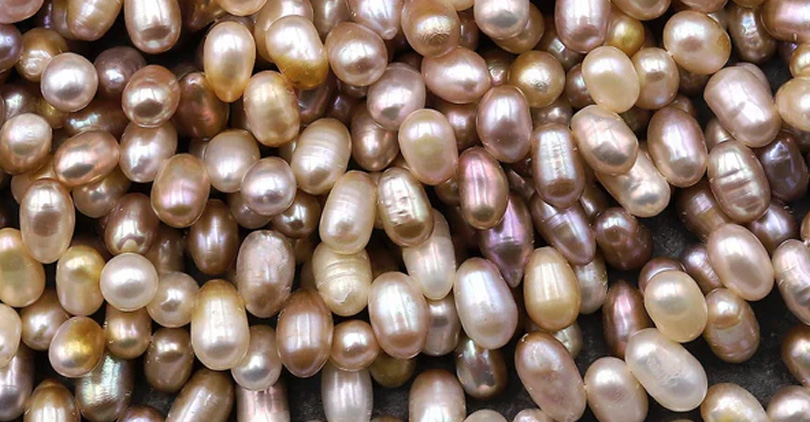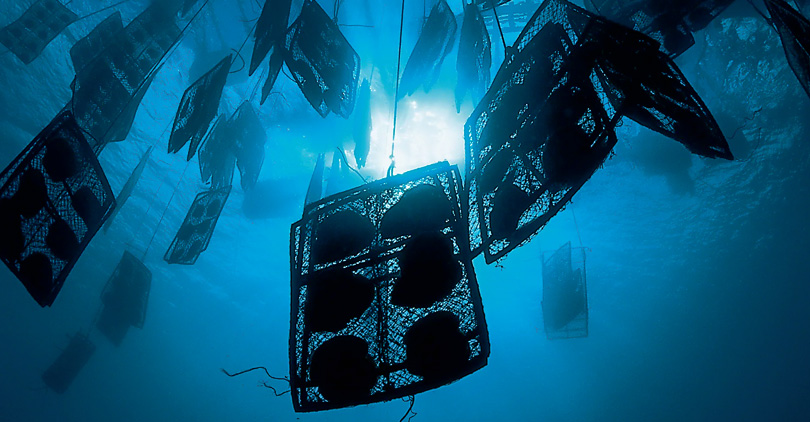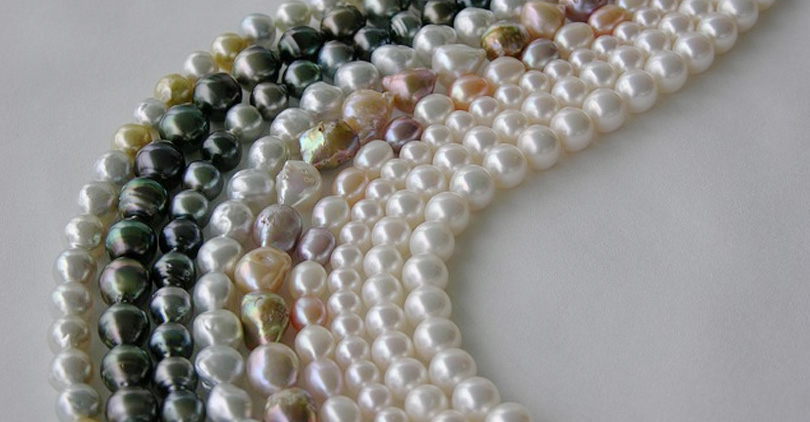How Are Pearls Made and Understanding Cultured vs. Natural Differences


Pearls, known as the "Queen of Gems," have fascinated people for centuries with their beautiful shine and classic beauty. They are thought to be pure and elegant. In fact, they may not just be jewels.
But how do pearls get made? Unlike all other gems, which are produced by geologic forces, pearls are living creatures' response to irritants.
This article takes a fascinating look at how pearls form inside oysters or mussels. It also examines what exactly cultured pearls are (compared to natural ones).
You will never look at these lustrous gems the same way again after learning about their origins and journey from sea creatures. Jewelry lovers, nature enthusiasts, and simply curious minds let's explore how pearls are made.
Natural Pearl Formation Process

Pearls are a wonder of nature, and how they form inside oysters is truly amazing. Let's explore the journey of these precious gems:
Oyster Anatomy and Pearl Formation Site

Oysters play host to an amazing feat of biological engineering: the creation of pearls. Deep inside these unassuming mollusks is a piece of tissue called the mantle. It is responsible for producing their shells. But it's also where something truly remarkable begins.
When an oyster gets irritated - by, say, a grain of sand or parasite - its mantle kicks into high gear. There, he starts doing what it does best: making a shell. This self-defense system triggers the first steps in pearl formation.
Irritant Introduction and Pearl Sac Formation

As soon as the irritant enters the oyster's body, it covers it with a sac made of pearl. The sac keeps the irritant separate from the rest of the oyster.
Next, the oyster uses its mantle (the part that lines the shell) to produce nacre again and again. Layer upon layer of nacre coats the irritant. After several years, it forms a beautiful pearl.
Nacre Deposition Process

The process of nacre formation is both slow and careful. Over time, layers of conchiolin and aragonite are deposited onto the pearl. They do it with great accuracy, giving it its trademark shine and color-play.
It may take several years for this to occur naturally. How healthy the oyster is—as well as how consistently it secretes nacre—will affect both the quantity and quality of what grows inside.
No two pearls are exactly alike. That is because each mussel or oyster creates its own extraordinary design. It acts as an unintended byproduct of keeping itself safe from irritants.
Natural Factors Influencing Pearl Quality
Environmental Conditions Affecting Pearl Growth

The quality of natural pearls can be attributed to environmental factors. Water temperature, salinity, and clarity all play a part in how well pearls form and how lustrous they are.
Oysters need clean water with lots of nutrients to grow and be healthy enough to produce high-quality pearls. If the environment is not stable or if there is pollution, pearl growth can be hindered. It can also result in pearls that have flaws or do not develop fully.
Types of Oysters Producing Natural Pearls

When it comes to pearls, not all oysters are equal. Different types of oysters create pearls with different traits.
The Akoya oyster (Pinctada fucata), for example, is known for making round, shiny pearls. It is just like you imagine when you think about a pearl. Meanwhile, the black-lipped oyster (Pinctada margaritifera) creates black pearls in various exocit shades.
Each mollusk contributes something special when it produces its signature pearl style. This is part of what makes these gems unique and interesting.
Rarity and Value of Natural Pearls

Natural pearls are very rare, which makes them worth a lot more money. They don't grow in farms like cultured pearls. They occur naturally in the wild.
Because there aren't many natural pearls around, it is difficult to find ones that match their unique beauty. This is why people who collect jewelry and those who wear it love natural pearls. If you won one, it would be like having an artwork because nature produced it!
Cultured Pearl Production

Cultured pearls have transformed how we make jewelry. They enable us to obtain and appreciate beautiful gems that were once rare. Let's understand why cultured pearls are so special:
Historical Development of Cultured Pearls

The search for pearls has been going on for centuries. People have tried lots of ways to grow them. But they didn't have much luck with early attempts.
For example, let's consider ancient Chinese and Persian methods. These involved putting things that weren't supposed to be inside oysters. But when they did this kind of thing, the oysters would often make pearls that were lumpy and not very nice.
It wasn't until the late 19th century that significant advancements were made. It was Kokichi Mikimoto who really cracked the problem of cultivating pearls.
He found out that we should implant oysters with nuclei in just the right way. This way, mollusks can produce only high-quality gems. It was a breakthrough that laid the groundwork for pearl farming worldwide. Besides, it turned cultured pearls into a global sensation.
Modern Cultivation Techniques

In contemporary pearl farming, a precise grafting method marks the start of cultivation. Here, technicians implant a small piece of mantle tissue along with a nucleus – often nothing more than a round bead – into an oyster.
This stimulates the creation of a pearl sac. The oyster generates layers of nacre around this sac in exactly the same way it would coat an irritant to produce a natural pearl.
Pearl farming necessitates expertise and technology to cultivate pearls successfully. Farmers must control water quality, temperature, and nutrients to keep their oysters healthy.
Regular cleaning and protection from predators are essential. This way, farmers can produce top-quality pearls. Even with everything done right, it can take years for an oyster to grow a beautiful pearl. So, each one has to be nurtured carefully.
Types of Cultured Pearls

Varieties Based on Origin
Different types of cultured pearls have their own specific qualities, which are categorized by where they come from:
- Akoya Pearls: These creamy or white pearls have a timeless beauty. They are usually smaller than other types but still very shiny. Japan and China mainly cultivate Akoya pearls.
- South Sea Pearls: Big and luxurious, these pearls can be found in colors such as white and gold. Australia, Indonesia, and the Philippines farm them in warm coastal waters.
- Tahitian Pearls: Want black pearls with a mysterious iridescent quality? Go for Tahitians! Still, they are not totally black. These gems can also be silvery grey, greenish-black, or dark blue. They are cultivated primarily around French Polynesia.
- Freshwater Pearls: These are produced by mussels primarily in China's lakes and rivers. Because freshwater pearls are so diverse, they're often more affordable than saltwater types. They come in a huge range of shapes, sizes, and colors – with some very bright indeed.
Factors Influencing Color and Size Variations

The color and size of cultured pearls can be influenced by factors such as the species of oyster, water conditions, and the type of nucleus used. South Sea and Tahitian pearls tend to be larger. That is because of the type of oysters they come from and their longer growing times.
Water temperature and mineral levels in the environment might also play a role in how a pearl ends up looking once it has formed.
Comparison with Natural Pearls

The main distinction between cultured pearls and natural ones is how they are made. people produce cultured pearls by inserting irritants into oysters. While natural pearls occur spontaneously in the wild.
Because they grow under human influence, cultured pearls can be made to a more uniform shape and size than natural ones. That is why they often have uneven surfaces. But all pearls—whether grown with help or not—have the entrancing luster that makes them beautiful.
What is more, cultured pearl farming offers both economic and environmental advantages. It provides a sustainable source of income for numerous coastal communities. Besides, it aids in the conservation of oyster populations through responsible environmental practices.
Furthermore, cultured pearls are more abundant and less expensive than natural pearls. That fact means that a larger market can enjoy these beautiful gems.
Historical and Cultural Significance

Pearls have an extensive history and cultural importance. It has fascinated people worldwide for thousands of years. Let's take a look at how pearls have evolved over time:
Historical Use and Trade

From ancient Egypt through the Roman Empire, individuals have cherished pearls. They symbolized richness, authority, and loveliness.
For example, Cleopatra demonstrated her wealth to Mark Antony by dissolving a pearl in vinegar. During this time period, Roman women wore pearls to show off their social standing.
Additionally, the Silk Road greatly assisted in the pearl trade between Asia and Europe/Africa. This connection created a very profitable market for these gemstones!
In India, pearls were thought to bring wealth and wisdom. They were often used in the crowns of kings as well as religious objects. In China, people saw pearls as a symbol of purity. They were even put into the crowns that emperors wore.
Native American tribes used freshwater pearls when they dressed up for ceremonies. They believed these gems were holy things made by nature itself. So, all around the world, different societies prized pearls and worked them into their culture in special ways.
Modern Usage and Industry

Pearls still captivate today, adorning the lines of celebrated jewelers and couturiers. Fashion houses continue to include pearls in their collections because they never go out of style.
Whether used in classic jewelry sets or inventive haute couture designs, the gemstones enchant people from all walks of life. Pearls suit both modern and traditional outfits well. Their adaptability explains why those who appreciate being elegant often favor pearl accessories.
Today, people become more conscious of environmental and ethical issues. That is why pearl producers are taking steps to ensure their industry is sustainable. Contemporary pearl farms strive to protect marine habitats and keep oyster populations healthy.
There is also a strong emphasis on ethical conduct. It includes fair treatment of workers and support for communities where pearls are produced. By these means, modern pearling doesn't just yield beautiful jewels. It also makes certain that the business behind them is ecologically sound and socially responsible.
Conclusion

Pearls, whether natural or cultivated, demonstrate a perfect balance between technology and nature. Pearls grow inside oysters in a fascinating process—and people have figured out how to do it, too.
These gems have always been special because they carry meaning from the past and culture. But now, designers also use them to make modern jewelry that lights up a runway.
We're not just saying how great pearls are. We should also celebrate the fact that these beautiful gems are produced sustainably. So future generations can enjoy them, too. It's rare when art, business, and environmentalism dovetail so neatly!


Leave a Comment